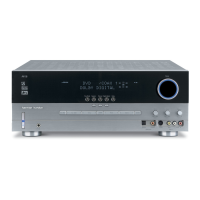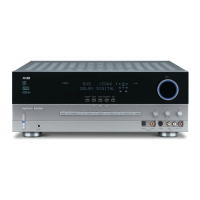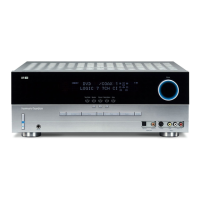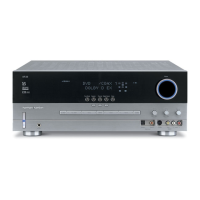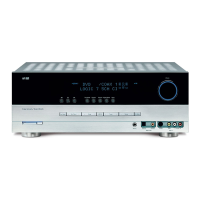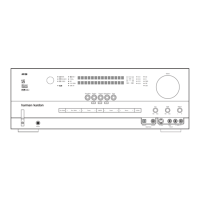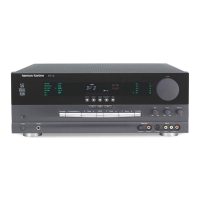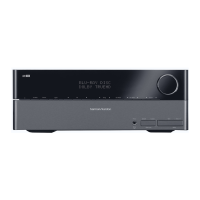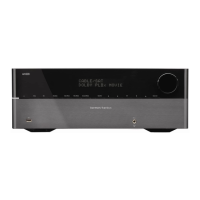
Do you have a question about the Harman Kardon 930 and is the answer not in the manual?
| Power Output | 45 watts per channel into 8Ω (stereo) |
|---|---|
| Frequency Response | 20Hz to 20kHz |
| Tuning Range | FM, MW |
| Damping Factor | 40 |
| Input Sensitivity | 2.5mV (MM) |
| Signal to Noise Ratio | 75dB |
Outlines the warranty coverage for material and workmanship defects for two years from purchase.
Specifies items not covered by the warranty, such as wooden enclosure damage and shipping costs.
Mandates retaining the original bill of sale for warranty service claims.
Provides contact information for customer service and authorized repair assistance.
Specifies minimum clearances for proper airflow around the receiver.
Details AC power connection, voltage compatibility, and auxiliary outlets.
Explains the role of fuses and the importance of using correct replacements.
Guides on connecting speakers for correct phase alignment and optimal sound.
Instructions for connecting four speakers across two independent systems.
Diagrams for connecting speakers in stereo and monophonic modes with loading resistors.
How to connect 300-ohm twin lead or 75-ohm coaxial FM antennas.
Instructions for connecting the AM loopstick or an external wire antenna.
Using preamplifier output and power amplifier input connections for external processors.
Connecting magnetic pickup turntables to the dedicated Phono 1 and Phono 2 inputs.
Establishing a common ground between the receiver and other audio components.
Connecting high-level sources like tape decks, tuners, or crystal pickups.
Connecting tape recorders for recording and monitoring programs.
Selecting between stereo, monophonic, and channel reverse operation.
Adjusting the overall signal level for playback.
Fine-tuning the sound level between left and right channels.
Adjusting low and high frequencies for desired tonal balance.
Selecting the input source for playback (Phono, AM, FM, Aux).
Turning the receiver on and off, and controlling switched outlets.
Selecting which speaker system(s) are active.
Enabling tape monitoring for recording and playback comparison.
Reducing high-frequency noise like scratch and hiss.
Reducing low-frequency noise such as record rumble.
Bypassing tone controls for a flat frequency response.
Enhancing low-frequency response at low listening levels.
Disabling FM muting to hear weaker stations or reduce interstation noise.
Reducing noise associated with weak FM multiplex signals.
Automatically selecting stereo FM broadcasts or forcing mono.
